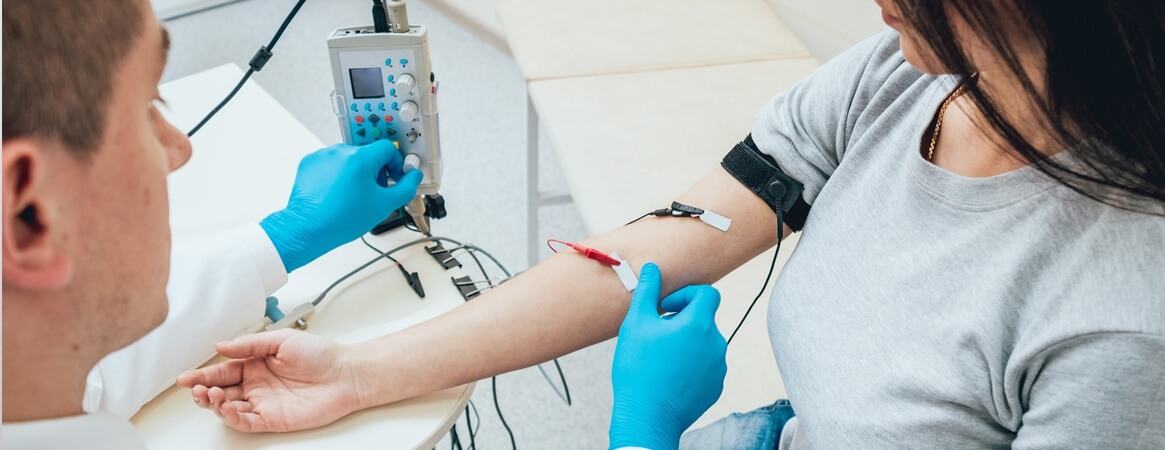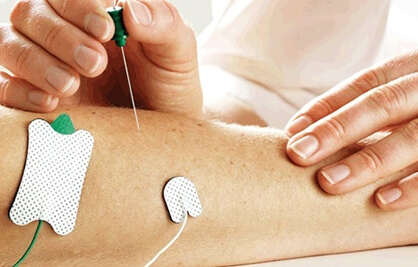EMG - Electromyography
Treatment Areas
- +
- +
- MAIN PAGE +
- BIOGRAPHY +
- +
- GALLERY +
- CONTACT +
- +
- +
- +
- +
- +
- +
- +
- +
- +
- +
- +
- +
- +
- +
- +
- +
- +
- +
- +
- +
- Prof. Dr. +
- Treatment Areas +
- - Multiple Sclerosis
- - Epilepsy - Sara's Disease
- - Alzheimers
- - Dementia
- - Dementia, Alzheimers
- - Migraines and Headaches
- - Parkinson's Disease
- - Sleeping disorders
- - Stroke - Paralysis
- - Hand, Foot Numbness
- - Muscle Weaknesses
- - Peripheral Neuropathy
- - Brain Related Infections - Tumors - Degenerative Diseases
- - EMG - Electromyography
- - EEG Recording - Electroencephalogram
- - Long Term Video EEG
- - Visual Evoked Potentials - VEP Test
- +
- - Diagnosis and Treatment
- - What is Multiple Sclerosis?
- - Alzheimer's Disease
- - Epilepsy
- - How Should
- +
- +
EMG - Electromyography
An EMG - Electromyography is a diagnostic test that evaluates the health of your muscles and the nerves that control them. It measures muscle response or electrical activity in response to nerve stimulation. EMG - Electromyography test is usually done to diagnose or rule out a muscle disorder or a nerve disorder affecting the muscles.

EMG - How Does Electromyography Work?
An EMG - Electromyography is a diagnostic test that evaluates the health of your muscles and the nerves that control them. It measures muscle response or electrical activity in response to nerve stimulation. EMG - Electromyography test is usually done to diagnose or rule out a muscle disorder or a nerve disorder affecting the muscles.
Motor neurons are nerve cells that transmit electrical signals that cause your muscles to contract. An EMG - Electromyography test uses small electrodes to transfer these signals to a machine that converts graphics, sounds, and sounds into numerical values that a neurologist can read and interpret.
EMG - Electromyography test is done on muscles at rest, slightly contracted and forcefully contracted. Normally, the muscle does not produce electrical signals when at rest. Electrical activity increases with vigorous contractions that produce the greatest amount of electrical activity.
What Is EMG - Electromyography Used For?
EMG - Electromyography is one of the diagnostic tools for patients with symptoms of nerve or muscle disorder. Common symptoms leading to an EMG - Electromyography test include:
Muscle Weakness
Tingling Or Numbness
Chronic Muscle Pain Or Cramp
Some Arm Or Leg Pains
EMG - Electromyography results are usually accurate to confirm or judge a range of muscle or nerve conditions such as:
Muscle Diseases
Myasthenia Gravis (MG)
Carpal Tunnel Syndrome
Amyotrophic Lateral Sclerosis
Herniated Spine Discs
Polyneuropathies; diabetic, paraneoplastic, drug use
What to Expect During the Test?
During EMG - Electromyography, depending on your symptoms and the muscles affected, your Neurologist may place surface electrodes at various locations on your skin or small needle electrodes on your skin and intramuscularly.
Because the electrode measures your muscle's electrical activity, you can see it on a screen or hear it through a speaker. Your doctor will give you instructions during the test about when to rest your muscles and when to strain.
EMG - How Do I Prepare for Electromyography?
Take a shower shortly before your test to remove natural oils from your skin and do not apply any lotions or creams. If you are having a test during the winter months, you may need to warm up after your appointment, as body temperature can affect the results of an EMG - Electromyography. Having a full stomach during the examination relaxes you. Wear comfortable or removable clothing.
If you have a pacemaker, use blood thinners, or have hemophilia, inform your neurologist before testing. Pregnant patients can also have the test, but inform your doctor before taking the test.

